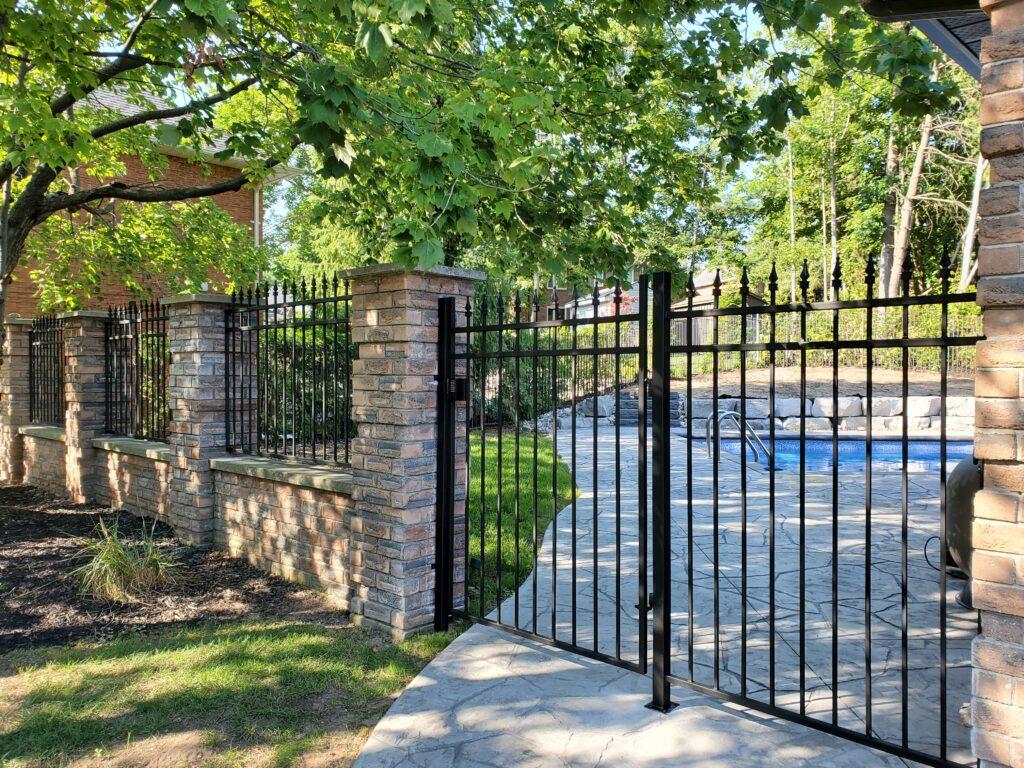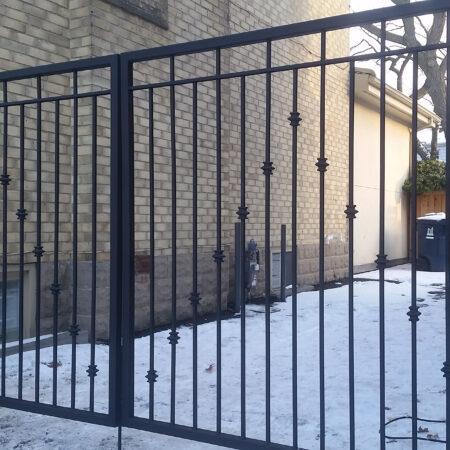Last Updated on November 21, 2024 by chanuka chanuka.23e2
Updated: November 21, 2024
Key Takeaways
- Aluminum Fencing Combines Style and Durability: Lightweight, rust-resistant, and easy to install, aluminum fences offer homeowners an excellent blend of functionality and aesthetics.
- Pre-Installation Prep is Critical: Always check property boundaries, zoning laws, and any HOA restrictions before starting your project.
- Customization Options: Choose from various styles like flat-top or pressed-point designs to meet security or decorative needs.
- Precise Layout Matters: Accurate mapping of the fence line, corners, and gate placement ensures a smooth and durable installation.
- Professional Help is Available: If DIY feels overwhelming, Art Metal offers expert guidance and installation services to make the process seamless.

Aluminum fences not only enhance the aesthetics of your garden or yard but also promise strength and functionality. Standing as a cost-effective option with an effortless installation process, aluminum fences have become a top choice for homeowners. Here’s a walk-through for you to set up an aluminum fence on your own.
Required Tools and Materials
Tools:
- Post Hole Digger
- Shovel
- Level for Post
- Tamper
- Tape for Measuring
- Rubber Mallet
- Screwdriver
Materials:
- Posts (End, Line, or Corner)
- Fence Panels
- Optional Gate
- Optional Gate Posts
- Gravel
- Stakes
- String
- Concrete Mix
It’s worth mentioning that the costs and availability of products can alter based on their market or online availability.
Steps for Fence Installation
Prior Preparations:
Before you begin the installation of your aluminum fence, there are a few vital preliminaries to take care of:
- Inform neighbors adjacent to your property about your fencing plans.
- Make sure your fence is within your property boundaries.
- Check your property’s deed for any potential easements.
- Be aware of any local zoning laws that may impact your fence’s size or placement.
- Verify with your neighborhood association for any fence-related restrictions, if applicable.

Selection of Aluminum Fencing:
The versatility of aluminum fencing allows you to choose between fence panels and posts of varying heights to suit your needs. High fences offer enhanced security, whereas shorter ones are ideal for decorative uses.
Aluminum fence panels are available in several styles like flat-top or pressed-point with varying decorative details. The post designs too vary according to the fence design.
Laying Out the Fence:
The layout of your aluminum fence plays a crucial role in its successful installation and future durability. Hence, ensuring accuracy while mapping out your fence line is vital.
Begin from the starting point of your fence, carefully stake out the extents of your intended fence on your property. It is vital to take all the corners into account during this process. These cornerstone points will serve as critical references as they usually house the end or corner fence posts, playing a pivotal role in dictating the direction of your fence.
If you plan to incorporate gates, make sure to mark those points as well. Always consider the size of the gate when determining its position to ensure that the fence layout accommodates it seamlessly.
Conclusion
Not sure about aluminum fence installation? Let Art Metal be your guide! Our experts are here to make your fence installation a breeze. With Art Metal, your aluminum fence will not only stand strong but also elevate your property’s style. Contact us now!
FAQs
Why is aluminum fencing a popular choice for homeowners?
Last Updated on November 21, 2024 by chanuka chanuka.23e2
Aluminum fencing is lightweight, resistant to rust, and requires minimal maintenance, making it a practical and stylish option.
Do I need a permit to install an aluminum fence?
Last Updated on November 21, 2024 by chanuka chanuka.23e2
In many areas, local zoning laws or neighborhood associations may require a permit. Check with your local authorities before installation.
Can aluminum fences be customized for different heights?
Last Updated on November 21, 2024 by chanuka chanuka.23e2
Yes, aluminum fences are available in various heights, from short decorative panels to tall security fences.
What tools are essential for aluminum fence installation?
Last Updated on November 21, 2024 by chanuka chanuka.23e2
You’ll need tools like a post hole digger, level, measuring tape, and a rubber mallet, along with materials like fence panels, posts, and concrete mix.
How can I ensure my fence is installed on my property?
Last Updated on November 21, 2024 by chanuka chanuka.23e2
Use stakes and string to outline the fence’s intended layout, ensuring it stays within your property boundaries.

 Chat
Chat 








